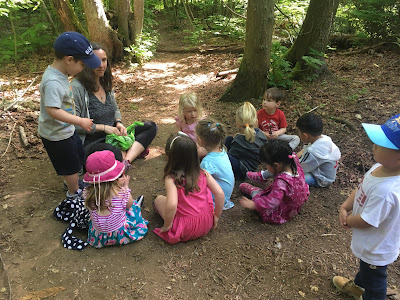Meet A Tree

The children have been learning about plants and recently had learned their parts. When I asked if they knew the parts of a tree they easily stated: "trunk, branches, leaves and roots." While this is important information when getting to know trees, a tree is so much more than it's parts. It was time for the children to get to know the trees in a different way. So off to the forest we went to meet a tree using our full range of senses. The children looked at the trees noticing the colour, size and the shape of the trunk, branches and leaves. Some children climbed them. After getting to know the trees in this way it was time to get to know them again without our eyes. Given a choice of either closing their eyes or using a blindfold the children were guided to a tree. They felt the trees, their texture, size and shape. They smelled the trees They listened to the trees. Using all their senses the...

